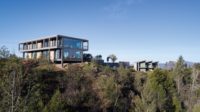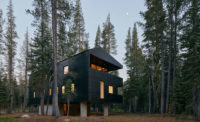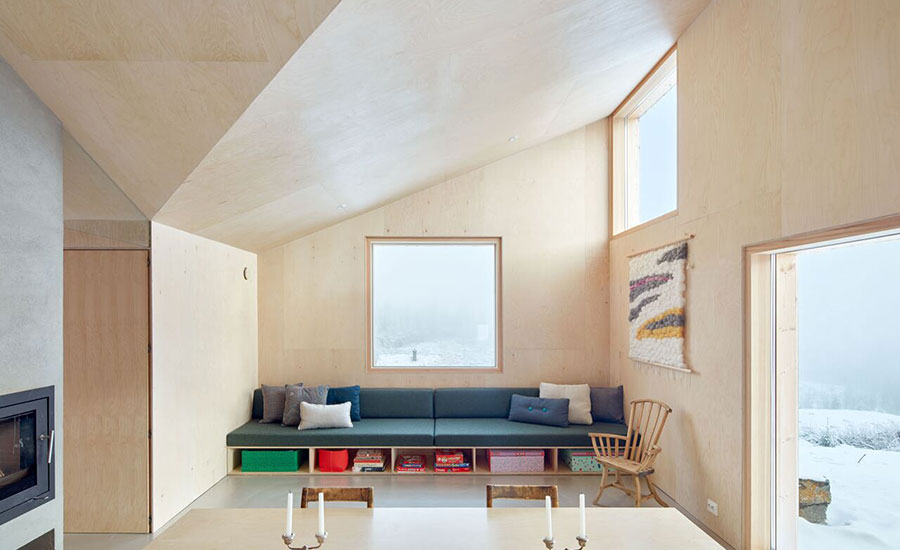Mylla Lake Cabin by Mork-Ulnes Architects
Norway

Clad in pine planks, the cabin will weather to a silver gray over time. The steep half-gables of the roof keep snow from shedding on doorways and patios.
Photo © Bruce Damonte

Clad in pine planks, the cabin will weather to a silver gray over time. The steep half-gables of the roof keep snow from shedding on doorways and patios.
Photo © Bruce Damonte

Custom built-in furniture in the children’s bunk room offers hidden storage and extra sleeping space. A ladder leads to a lofted area above hallway storage areas.
Photo © Bruce Damonte

Custom built-in furniture in the living room offers hidden storage and extra sleeping space. The couches, designed by Lexie Mork-Ulnes, are comprised of two twin mattresses placed end to end.
Photo © Bruce Damonte

Image courtesy Mork-Ulnes Architects





Architects & Firms
In Norway, owning a cabin isn’t a trend or a luxury; it’s practically an essential part of the culture. Stemming from the German word Hütte, meaning hut, a traditional Norwegian hytte is a small, utilitarian, and often prefabricated cottage where nature takes center stage. When Scott and Christine Young moved with their two children from Houston to Oslo for work, they decided to put down roots in Norway, and asked their friends Casper and Lexie Mork-Ulnes of Mork-Ulnes Architects—a 2015 Design Vanguard firm based in San Francisco and Oslo—to design a second home. They wanted an outdoorsy yet comfortable retreat, close to the hiking, biking, and fishing spots that they enjoy.
For a site overlooking Mylla Lake, just over an hour north of Oslo, the architects designed a two-bedroom, 940-square-foot cabin. It is clad in untreated heart pine planks and deviates from the single-gable roof typical of hyttes. Four connected volumes, each with a steeply sloped roof representing one half of a gable, pinwheel out from the house’s center. The structure’s plan allows for two protected porch areas that face the rising or setting sun and creates unique views of the lake, forest, hillside, or sky from each room. The striking roof angles differentiate the cabin from its neighbors and allow natural light from generous windows to spread throughout the interior. They also serve the utilitarian purpose of funneling snow away from the porches. “Here in snow country, you have to be careful where the snow sheds,” says Casper, a native Norwegian. “You don’t want it to land on your head.”
Interior walls and ceilings are clad in pine plywood treated with lye and white oil, giving them a luminous finish. The topography of the roof carries through inside, where large glass transoms above the bedroom doors disperse light while buffering sound. Heated concrete floors are comfortable on cold days and also easy to clean when booted feet track slush indoors. With the exception of a few chairs, all of the plywood built-in furniture was custom designed by Lexie and offers storage space. “Everything has multiple functions,” she says, noting how the kitchen island forms the back of the dining room bench, and the sofa includes two twin mattresses set end to end.
The Mylla House itself is multipurpose: it’s a place for the Youngs to retreat to from their weekday urban existence, but, more than that, it’s a place for them to be together as a family, putting their own spin on the customs of their new country.









